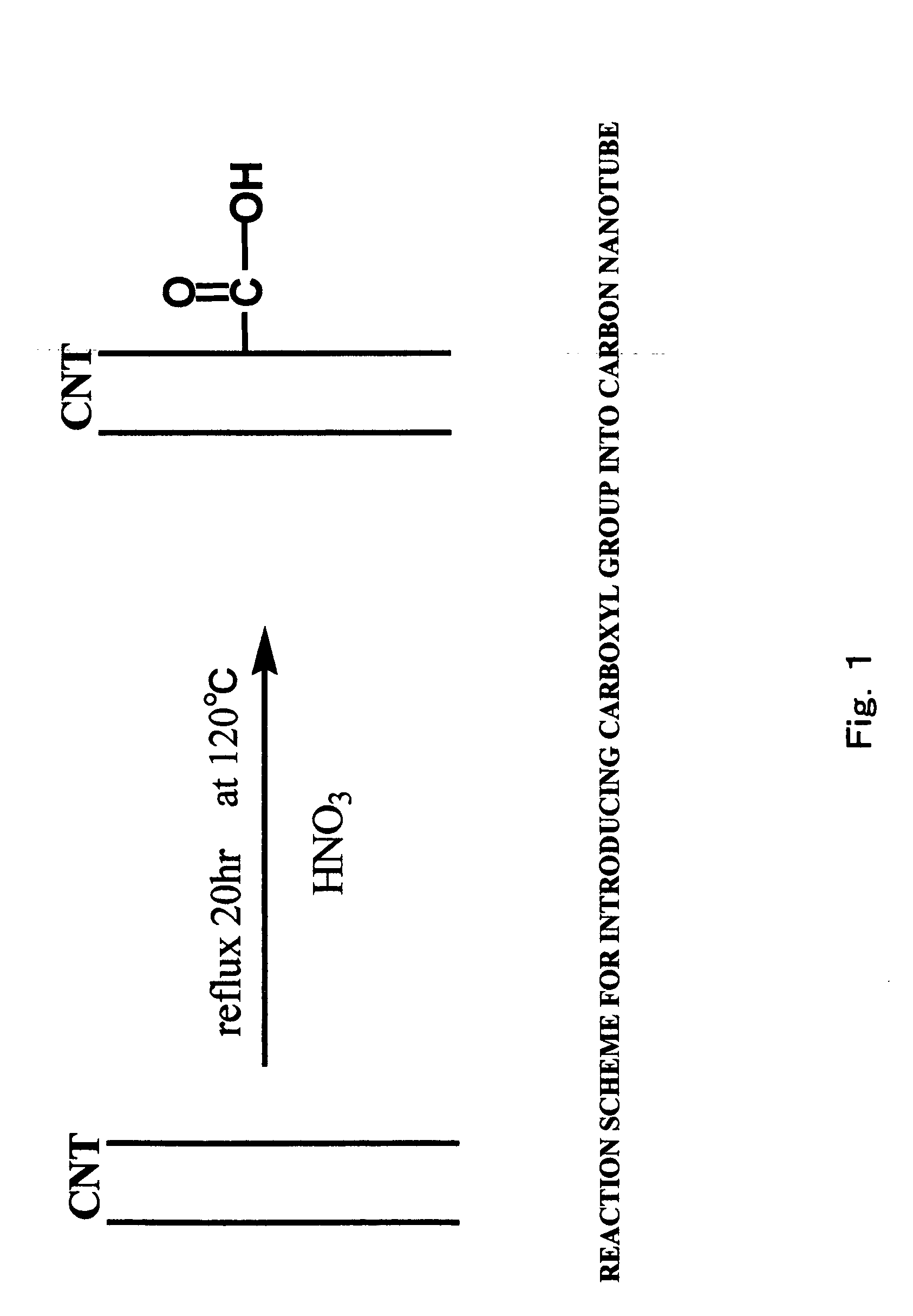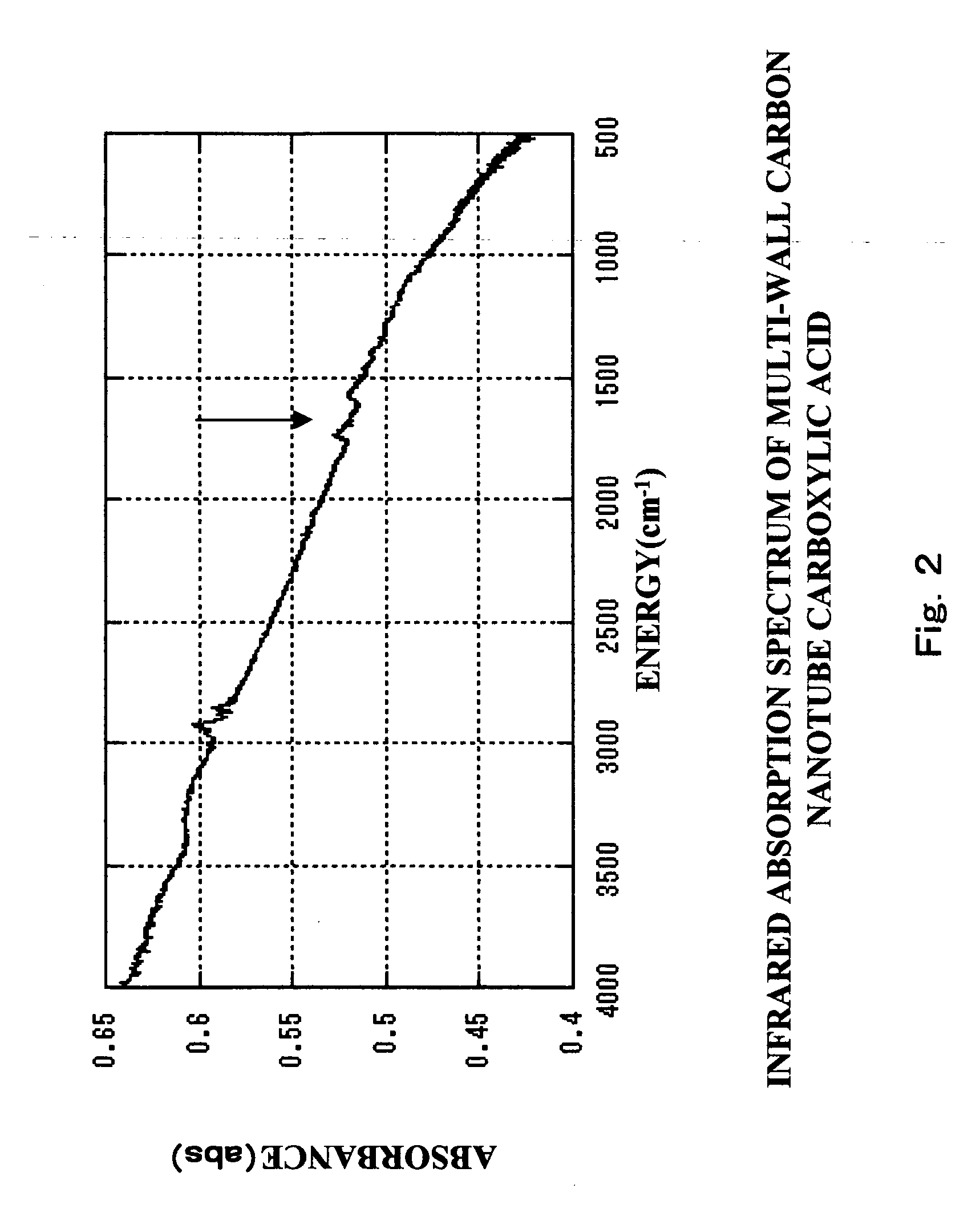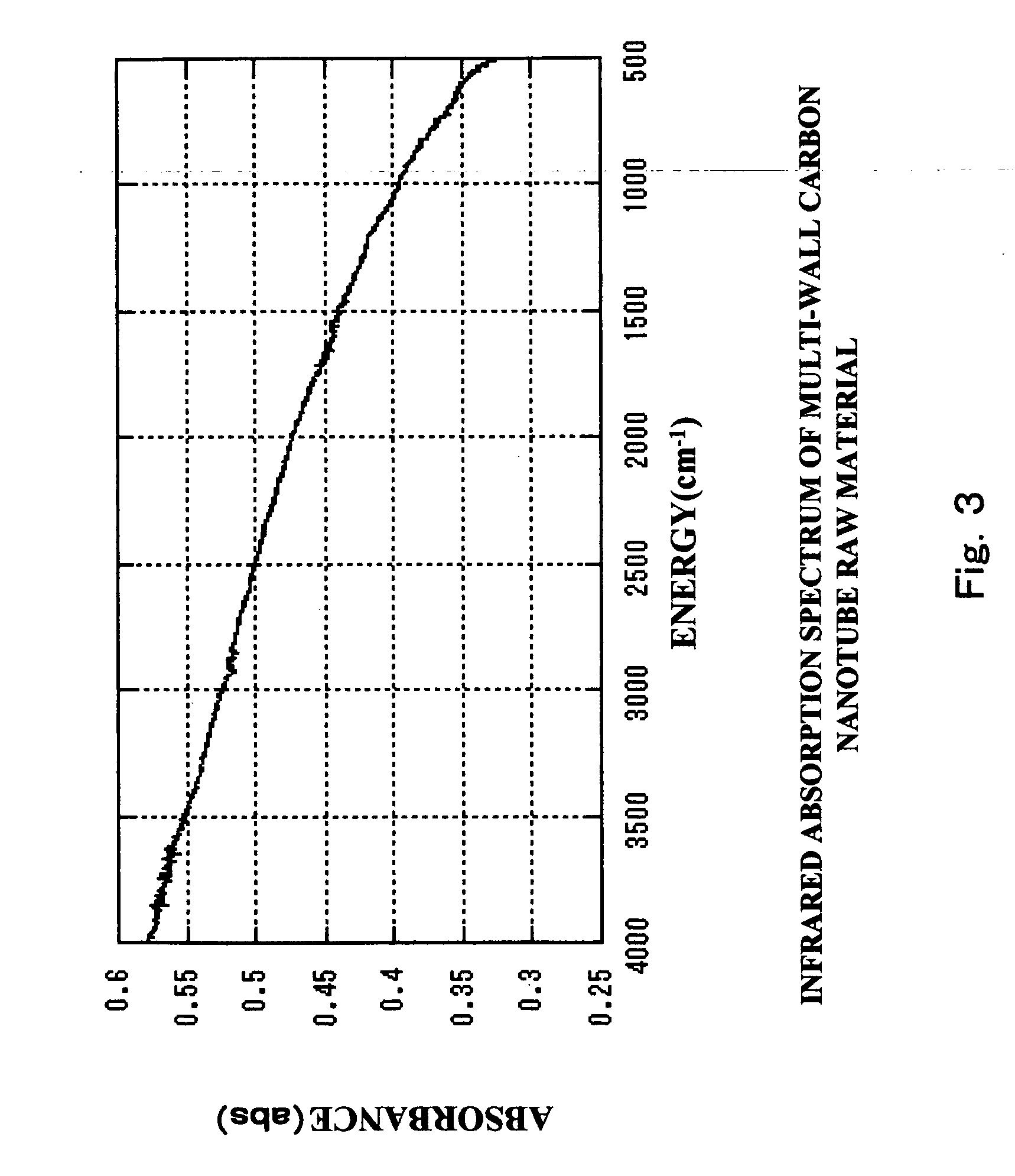Liquid mixture, structure, and method of forming structure
a liquid mixture and structure technology, applied in the field of liquid mixture, structure and method of forming structure, can solve the problems of insufficient utilization of excellent characteristics of carbon nanotubes such as the difficulty of using carbon nanotubes as materials, etc., to achieve high electron- and hole-transmission characteristics, high reactivity, and easy introduction of carboxyl groups into carbon nanotubes
- Summary
- Abstract
- Description
- Claims
- Application Information
AI Technical Summary
Benefits of technology
Problems solved by technology
Method used
Image
Examples
example 1
Synthesis of Multi-Wall Carbon Nanotube Paint Crosslinked by Using Glycerin and of Coat
(Adding Step)
(1) Addition of Carboxyl Group . . . Synthesis of Carbon Nanotube Carboxylic Acid
[0126] 30 mg of multi-wall carbon nanotube powder (purity: 90%, average diameter: 30 nm, average length: 3 μm, available from Science Laboratories, Inc.) were added to 20 ml of concentrated nitric acid (60 mass % aqueous solution, available from Kanto Kagaku) for reflux at 120° C. for 20 hours, to synthesize a carbon nanotube carboxylic acid. A reaction scheme of the above is shown in FIG. 1. In FIG. 1, a carbon nanotube (CNT) portion is represented by two parallel lines (the same applies for other figures relating to reaction schemes).
[0127] The temperature of the solution was returned to room temperature, and the solution was centrifuged at 5,000 rpm for 15 minutes to separate a supernatant liquid from a precipitate. The recovered precipitate was dispersed in 10 ml of pure water, and the dispersio...
example 2
Synthesis of Single-Wall Carbon Nanotube Paint Crosslinked by Using Glycerin and of Coat
(1) Purification of Single-Wall Carbon Nanotube
[0137] Single-wall carbon nanotube powder (having a purity of 40%, available from Aldrich) was sieved (with a pore size of 125 μm) in advance to remove a coarse aggregate. 30 mg of the remainder (having an average diameter of 1.5 nm and an average length of 2 μm) were heated at 450° C. for 15 minutes by means of a muffle furnace to remove a carbon substance other than a carbon nanotube. 15 mg of the remaining powder were sunk in 10 ml of a 5N aqueous solution of hydrochloric acid {prepared by diluting concentrated hydrochloric acid (a 35% aqueous solution, available from Kanto Kagaku) with pure water by 2 fold} for 4 hours to dissolve a catalyst metal.
[0138] The solution was filtered to recover a precipitate. The recovered precipitate was subjected to a combination of the steps of heating and sinking in hydrochloric acid 3 more times for purifica...
example 3
Synthesis of Multi-Wall Carbon Nanotube Paint Crosslinked by Using Ethylene Glycol and of Coat
(Adding Step)
(1) Addition of Carboxyl Group . . . Synthesis of Carbon Nanotube Carboxylic Acid
[0150] 30 mg of multi-wall carbon nanotube powder (purity: 90%, average diameter: 30 nm, average length: 3 μm, available from Science Laboratories, Inc.) were added to 20 ml of concentrated nitric acid (60 mass % aqueous solution, available from Kanto Kagaku) for reflux at 120° C. for 20 hours, to synthesize a carbon nanotube carboxylic acid.
[0151] The temperature of the solution was returned to room temperature, and the solution was centrifuged at 5,000 rpm for 15 minutes to separate a supernatant liquid from a precipitate. The recovered precipitate was dispersed in 10 ml of pure water, and the dispersion liquid was centrifuged again at 5,000 rpm for 15 minutes to separate a supernatant liquid from a precipitate (the above process constitutes one washing operation). This washing operation wa...
PUM
| Property | Measurement | Unit |
|---|---|---|
| length | aaaaa | aaaaa |
| diameter | aaaaa | aaaaa |
| diameter | aaaaa | aaaaa |
Abstract
Description
Claims
Application Information
 Login to View More
Login to View More - R&D
- Intellectual Property
- Life Sciences
- Materials
- Tech Scout
- Unparalleled Data Quality
- Higher Quality Content
- 60% Fewer Hallucinations
Browse by: Latest US Patents, China's latest patents, Technical Efficacy Thesaurus, Application Domain, Technology Topic, Popular Technical Reports.
© 2025 PatSnap. All rights reserved.Legal|Privacy policy|Modern Slavery Act Transparency Statement|Sitemap|About US| Contact US: help@patsnap.com



